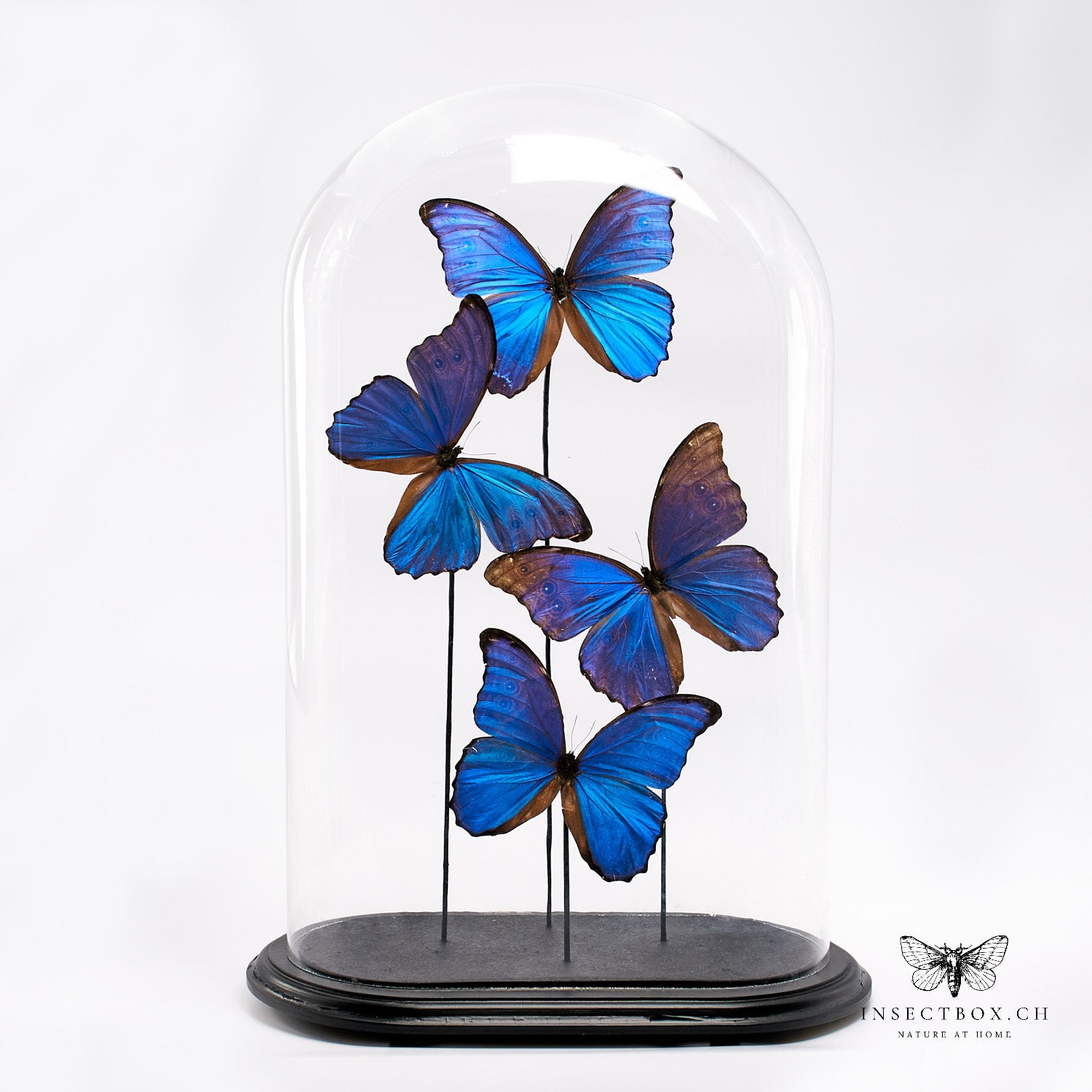carminehome
Antique glass bell jar with prepared butterflies - Morpho didius
Antique glass bell jar with prepared butterflies - Morpho didius
Couldn't load pickup availability
Antique glass bell jar with prepared butterflies - Blue Morpho butterfly - Morpho didius
Description:
The Blue Morpho butterfly (Morpho didius), also known as the Blue Sky butterfly, is an impressive butterfly in the Nymphalidae family. It is characterized by its bright blue upper wings, the blue being caused by the interference of light on the scales on the wings, which are arranged like a fir tree, and not by pigments. The wingspan of these butterflies is about 95 to 120 millimeters. In females, the blue is not as intense as in males. The leading edges of the forewings and the outer edges of the forewings and hindwings are black. The undersides of the wings are brown with wavy white stripes and have yellow-bordered eyespots, four of which are on the hindwing and three on the forewing.
Happen:
These fascinating butterflies can be found near forest edges, forest paths and on plantations in the tropical rainforests of Mexico, Central America, North and South America, Trinidad and other West Indian islands. Their distribution area extends to an altitude of about 1,400 meters above sea level.
Way of life:
The butterflies feed on fermenting fruit and fly particularly in open areas of the forest along rivers, roads and paths. Their flight is extremely fast and powerful. The females fly particularly around midday and lay their eggs on the upper side of the leaves of their food plants. The hatched caterpillars are yellow and red spotted and can reach a length of up to 90 millimeters. Their head capsules are hairy. The development from egg to adult butterfly takes about four months (an average of 115 days).
Food of the caterpillars:
The caterpillars feed on Fabales, especially plants of the genera Mucuna, Lonchocarpus and Pterocarpus.
Status:
This species is normally common, but it is threatened by habitat loss and increasing collecting activity.
Share


